Travel between parallel universes (or time lines, as they’re sometimes called) goes back a long way in SF, but has become vastly more popular since the 1950s and the Many-Worlds interpretation of quantum mechanics, whereby the outcome of every quantum-scale event is resolved by creating new parallel versions of the entire universe for each possible outcome.
This has been on my mind lately, as I’ve just finished the ninth novel in my own parallel-universe hopping Merchant Princes saga. It began in The Family Trade as a normal-at-first-glance portal fantasy. In portal fantasy, a protagonist from our own world travels to a secondary world where things are different, and frequently returns, but it’s usually a strict back-and-forth. Think of the Chronicles of Narnia by C. S. Lewis or The Windrose Chronicles by Barbara Hambly. But three books into the series it turned a corner into SF, and nine books in, Invisible Sun ends with a space battle and raises the curtain to reveal an infinitely larger vista, a war fought on as large a scale as any space operatic clash of galactic empires.
Where does the enduring attraction of parallel universe travel come from, and how does it differ from portal fantasy (or alternate history, for that matter)?
In SF, travel to parallel universes is a convenient work-around for the show-stopping difficulty of rationalizing travel to other worlds in our own continuum. You don’t need an FTL drive or a starship to visit the universe next door! Moreover, when travelling to another version of Earth you’re almost guaranteed a habitable biosphere. So you get to play with a whole new world without the worldbuilding that goes into exoplanetography or FTL drives. You can also leverage parallel history: what if you find yourself on the version of Earth where the Russian Revolution fizzled, or France invaded and occupied England in 1756 and the industrial revolution was delayed by a century?
Parallel universes are also popular in Fantasy, albeit for a different reason: it provides an excuse to change the laws of nature (and magic). Magic becomes indistinguishable from technology if you make it too rigorous, but adding parallel worlds to fantasy lets you can shake up the underlying logic of a setting. It’s also a fine excuse for a different variety of travelogue from the usual. There’s no need for the minutiae of sailing ships, horses, or carriages if you’re travelling to the dimension of airships and steam engines (or dragons, for that matter).
Here are five decent examples of the trope, written in both fantasy and SF style:
The Chronicles of Amber by Roger Zelazny
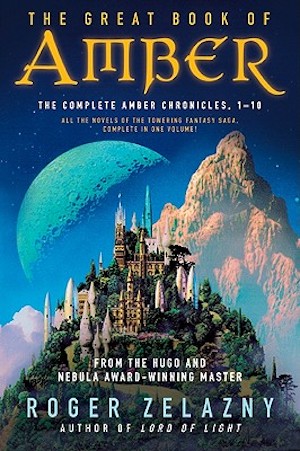
Beginning with Nine Princes in Amber (published in 1970), Zelazny’s ten book series puts the fun into dysfunctional families. Corwin of Amber, our initially-amnesic protagonist, is one of the ten bickering children of the king of Amber, the ur-kingdom that casts endless shadows—by which I mean other worlds—upon the abyss of Chaos. The family have inherited paranormal powers—the ability to walk through shadows to any world they can imagine, uncanny healing, remarkable longevity—but what they don’t possess is amity: their backbiting and feuding can be lethal. The godlike King Oberon is missing, the fate of the universe is in jeopardy, and…they’re the type specimen for parallel universe travel in fantasy. These are short books, written with Zelazny’s characteristic elan and playfulness, and published between 1970 and 1991: and while they’re very much of their time (30-50 years ago) they haven’t aged as poorly as many other works from the same period.
The Invisible Library series by Genevieve Cogman
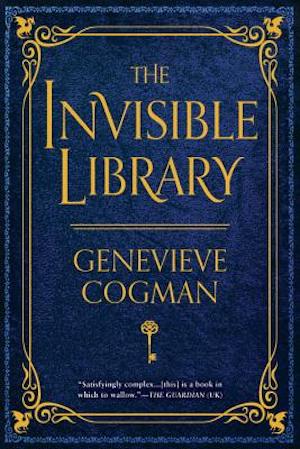
Genevieve Cogman’s Invisible Library series (starting with the titular The Invisible Library, first published in the UK in 2014) mirrors The Chronicles of Amber’s setting while using it for drastically different ends. There is Chaos (characterized by the malign and capricious Fae) and there is Order (oppressively maintained by Dragons), and the worlds between total chaos and total order exist in a spectrum of states. Holding itself apart from the endless cold war between the fae and the dragons is the Library, which exists outside of space and time: a liminal space curated by the Librarians, who harvest unique-throughout-the-multiverse works of fiction. Our protagonist Irene is a sensible lady in sensible shoes—the better for running with whatever book she has acquired (read: stolen) for the Library. She is assigned to a branch office in an unstable, chaos-adjacent steampunk London (there are airships, famous detectives, werewolves, and clockwork crocodiles), where it gradually becomes apparent that a struggle for control of the multiverse is under way and the Library is in danger of being sucked in. Great fun, and an example of the form updated for the present.
The Paratime series by H. Beam Piper
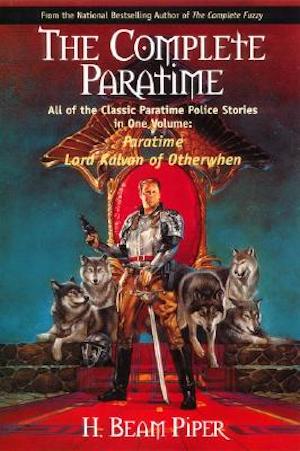
Writing between 1948 and his death in 1965, H. Beam Piper created a series of short stories and one novella dealing with the colonial expansion of a technologically advanced civilization, the people of Home Timeline, who secretly exploit the inhabitants (both high and low tech) of the other time lines they visit by means of their conveyors. Their own world is resource-depleted, so of course they use their access to paratime to extract wealth and materials from the unknowing neighbors, while policing paratime to keep its existence secret from the residents of other time lines. They’ve been published as standalone short stories and one novel (Lord Kalvan of Otherwhen) assembled from extra-short 1960s novels: also collected in an omnibus edition, The Complete Paratime (2001).
There is, to modern sensibilities, a ruthlessly colonial edge to this setup: if there are any mitigating circumstances at all, they lie in the secret paratime empire being headquartered in east Asia rather than being a re-siting of the British Empire (which Piper clearly had in mind for some of their political mechanisms).
(I’ve cited both the Chronicles of Amber and the Paratime stories as taproots for my own Merchant Princes universe: as in the former, the ability to travel between timelines is hereditary, and as in the latter, imperialist exploitation ensues. I consider Piper’s Paratime significant as one of the earliest examples of parallel universe travel in modern American SF—this doesn’t mean it’s unproblematic.)
A Darker Shade of Magic by V. E. Schwab
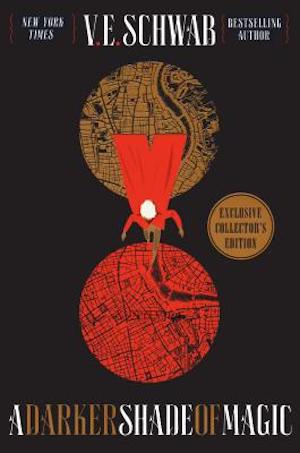
V. E. Schwab’s Shades of Magic trilogy, beginning with A Darker Shade of Magic, is another fantastical take on trade between parallel universes, although it’s a heavily restricted trade: the Antari are rare (very rare) magicians with the ability to visit other versions of London—Red, Grey, White, and the now-forbidden Black versions. (Grey London, almost bereft of magic, is ruled over by George III.) Kell, Antari to the king of Red London, serves as an ambassador to the royals of White and Grey London. While visiting Grey London he falls foul of a one-eyed pickpocket, who forces him to give her a ride to another world. Beyond which point anything I say would be a spoiler: suffice to say, it’s character-driven adventure, beautifully executed, and a fine illustration of the change-the-rules-of-magic use of parallel universes in fantasy.
The Female Man by Joanna Russ
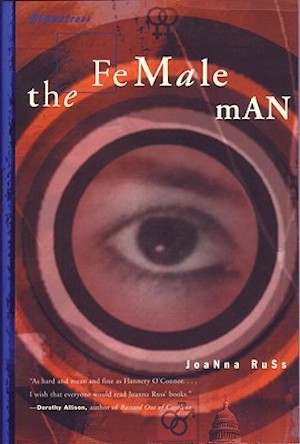
As angry and effective a landmark of feminist SF when it was published in 1975 as it would have been when it was written in 1970, The Female Man gives us four parallel universes, in which overlapping versions of protagonists (Joanna/Jeannine/Janet/Jael) exist—they visit one another, comparisons of their prescribed gender roles and socialization are made, and identities are examined. It’s widely considered one of the wellsprings of feminist SF, rather than parallel universe travel, but I include it here to demonstrate that parallel universe travel isn’t simply an excuse for a travelogue: it can be used effectively to contrast alternative outcomes.
(Trigger warning: the Jael sections have been criticized as transphobic—not unusual in works associated with second-wave feminism. Russ subsequently apologized. As with Paratime and Amber, The Female Man reflects the time and culture in which it was written. Attitudes in the relatively recent past may be distasteful or disturbing to readers.)
Honorable mentions:
There are too many parallel universe sagas out there to list them all. But I feel that I ought at least to mention some of the more prominent ones that nevertheless didn’t support my tub-thumping agenda here, notably: The Lathe of Heaven by Ursula K. Le Guin, The Fall of Ile-Rien by Martha Wells, The Long Earth by Stephen Baxter and Terry Pratchett, the Millennium’s Rule series by Trudi Canavan, the Wayward Children series by Seanan McGuire, Eternity and Eon by Greg Bear.
Buy the Book
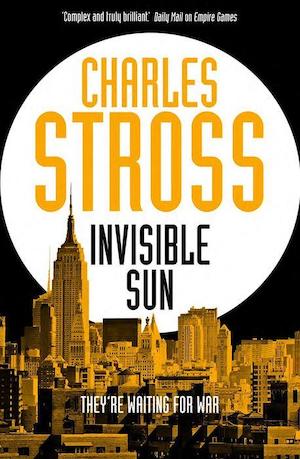

Invisible Sun
Charles Stross lives in Edinburgh, Scotland, and to date has three Hugo Awards and been nominated twelve times. He has also won the Locus Award for Best Novel, the Locus Award for Best Novella, and has been shortlisted for the Arthur C. Clarke and Nebula Awards. Stross is the author of the bestselling Merchant Princes series, the Laundry series, and several stand-alone novels including Glasshouse, Accelerando, and Saturn’s Children.



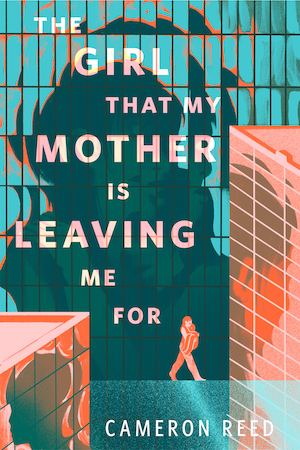
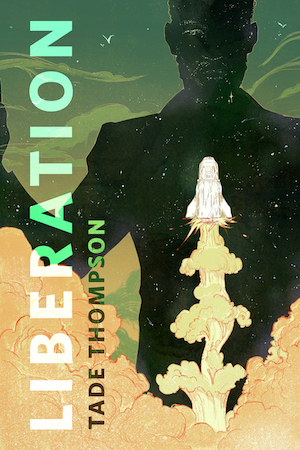





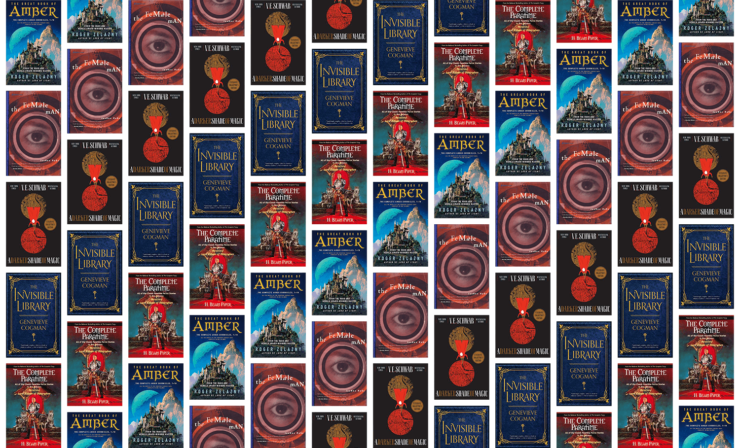
Steven Gould’s Wildside mentions in passing an issue that could come up while traversing timelines: transporting parasites and diseases from one timeline to another. As I recall, the example was bird parasites but it could just as easily be a particularly virulent flu.
I’d forgotten Wildside!
(Disease control gets a nod in Empire Games, for much the same reason: I don’t think it had occurred to Piper, who was writing in the Age of Antibiotics …)
May I submit The Compleat Enchanter by Fletcher Pratt and L. Sprague DeCamp?
Harold Shea, psychologist, has learned that all works of literature are actually parallel worlds that he by means of science fiction can enter. See him in the world of the Kalevala, Orlando Furioso, the Faerie Queen, etc etc. Good fun!
V.E. Schwab’s series has the added bonus of a character named Charlie Stross, who is a crewmember of a pirate ship in the Red London universe.
Arr, me hearties!
I remember “The Chronicles of Thomas Covenant”. Only one alternate time-line. It’s been a LONG time since I read it, though!
Harry Turtledove’s Crosstime Traffic series was a YA homage to Piper from a decade or so ago.
The Chronicles of Thomas Covenant wasn’t a new timeline but where Thomas appears in a magical world. Its more like isekai for its time.
Have to disagree about Shades of Magic. Schwab seemed to lose interest in the different Londons, and become a lot more fascinated with the character of Lila than I could be.
Of course, we would be remiss to not mention perhaps the most famous example: DC Comics’ Crisis on Infinite Earths (which itself grew out of a long history of alternate earths, used as an explanation for DC’s not-terribly-coherent canon, and which ushered in subsequent waves of “Elseworlds” and “Hypertime” Crises from Flashpoint to Rebirth to… whatever the hell it is they’re doing now).
If I may be forgiven for blowing my own horn, Tangent Knights, my new original series of full-cast audio novels from GraphicAudio, is a hard-SF superhero series involving parallel universes (and inspired by Japanese tokusatsu action heroes). The first book (the only one out so far) is set in a world where communication with parallel Earths is common but physical travel between them is believed impossible — so where are the attacks by inhuman monsters coming from? The scope of the story will expand to other universes in the succeeding volumes. I’m basing it in Many-Worlds quantum physics, but the realistic kind where timelines diverge due to quantum-scale events rather than human actions or choices, and where different people are born in different timelines, so people don’t have doppelgangers (well, unless they were born before the timelines split).
Ted Chiang’s “Anxiety Is the Dizziness of Freedom” (in Exhalations) is one of the more interesting examinations of the alternate timeline concept that I’ve seen.
I wouldn’t call it a saga, being just one book, but Famous Men Who Never Lived (K. Chess, 2019) is about refugees who “evacuate” between timelines, and how they, and the receiving timeline, have to cope. The timelines diverged only within the last century, so the refugees have some points of commonality, but that makes the differences even more disconcerting. Cultural misunderstandings galore.
Regarding Ducks and Universes (Neve Maslakovic, 2011) is also a single book (that could have started a series, but didn’t). In this case, there is a tourist trade between the two known timelines, which diverged within living memory of the characters, but long enough ago that the big differences have started. Lots of “this is the same, but that’s different”, how to deal with the alternate versions of people you know, and trying to decide which version of yourself should be jealous of the other. And then, what happens if one or both lines diverge again?
Wheel of Time of course. Portal worlds for the win!
What about Jack L Chalker’s ‘God Inc’? I think I only read one book in the series way back, but the alternate cultures ruled by syndicates was amusing. ‘Ginsu’ ninjas and such.
John Barnes Things Undone.
Why ten? The Corwin books feature nine sons and four daughters of Oberon, so that would make thirteen children including Corwin. (That’s not counting offstage siblings such as Osric and Finndo.) Arguably Benedict and Llewella are staying out of politics and technically not bickering, but I’m having a hard time thinking of a third non-bickering child ;-)
Oberon of Amber had more than 10 children: Nine sons and several daughters according to the original series . (I can’t remember how many of the latter; females are mostly marginal in the Amber series, one of its biggest deficiencies, and a weakness characteristic of Zelazny’s work as a whole.) I think the second half introduced still more of Oberon’s bastards. I can’t say for certain, however, as I didn’t read those inferior volumes nearly as many times.
@11 Raskos, Indeed! I’d say it sets the bar for the concept.
Jo Walton, My Real Children.
That reminds me of the Norwegian TV series “Beforeigners”, where, for no obvious reason, people from the stone age, the Viking era, and the 1900’s start arriving in the modern day, where the authorities have to try and integrate them. At it’s heart it’s a police procedural following the first Viking member of the Oslo police. Only one season so far, but another should be in the pipeline.
I’m a little surprised that no one has mentioned the Myth series started by Robert L. Aspirin and continued by Jody Lynn Nye. Parallel worlds is the whole basis for the series and most of the jokes.
Zelanzy was not at all consistent in the number of acknowledged children sired by Oberon. In the first book Corwin remembers that there were originally fifteen sons, of which six are dead leaving the nine princes of the title. There were supposedly eight daughters of which four are dead leaving four. Later this becomes a vague mention of siblings before them who didn’t survive..
I’m very fond of the Paratime series but the technology is laughably outdated, and the social attitudes equally so but that’s not the point of the story. But my God, all the smoking!!!
The Rise and Fall of D.O.D.O., by Neal Stephenson and Nicole Gallad, in which the protagonists have to travel to multiple past alternates to make changes to the present timeline.
A Century of Progress by Fred Saberhagen comes to mind. A little slow but hey, Nazi hunting!
Wildside: that book nearly caused me to lose a job when I stayed up almost all night reading it instead of sleeping. I literally could not put that book down. Three days later I read it again… Gould’s second book is a winner.
Neither of these could be considered saga’s, but there are times that I wish Gould would stop turning out Jumper sequels (not that that’s a bad thing!) and give us Wildside sequel instead.
I recently read Micaiah Johnson’s “The Space Between Worlds” for the Astounding awards and it was amazing. The basic idea is that you can travel between worlds, but only if they are sufficiently closely aligned and only if you are dead in the other worlds. It’s an exploration of privilege and self, but it’s also got great characters and relationships.
Also Patricia McKillip’s 1972 novel “Ombria in Shadow”, which won the World Fantasy Award that year. A gorgeous fantasy novel where sometimes people stumble into the parallel world, and sometimes other timelines seem like almost palpable possibilities. There’s a sense of history returning or sinking – the undercity is almost another world where the Witch and her waxling Mag live. The Prince is dying and Ombria trembles on the brink of change.
@11 – absolutely agree about Ted Chiang’s “Anxiety Is the Dizziness of Freedom”; the whole collection is good.
“The Rifter” series by Ginn Hale is a portal fantasy with duelling alternate timelines and is superb. It’s about love, queerness, ecological catastrophe and the nature of god – although it has a rather high body count if that’s something that bothers you.
For the YA/kids books set, most things by Diana Wynne Jones fall into the parallel worlds category, but most explicitly the two Magid books and the Chrestomanci series. My favorite, though, is The Homeward Bounders, where a mysterious cult plays D&D with the multiverse.
Heinlein’s Number of the Beast?
I would add Rysa Walker’s Chronos series.
The 22 Murders of Madison May by Max Barry explored parallel worlds.
Resonance by Chris Dolley is a stand alone alternate universes novel that doesn’t get enough love.
Different medium, but the recent podcast “Out of Place” is an interesting take on alternate timelines, one single artifact at a time. Then it grows.
My favorite: Alternities, by Michael McDowell: The main character goes to a alternate Kubrick film about a 9/11 type event that didn’t happen in our universe. Imagine going to see “The Twin Towers” (Oliver Stone) and being the only one in audience who has no idea how the movie ends! All the reader knows about that incident is a review of that Kubrick movie from a very short NYTimes review…. and most of the comments are about cinematography and script choices..
The device of author written factoids placed as non-fiction at the beginning of chapters is a very old ploy. John Brunner used it in Stand on Zanzibar, Frederick Pohl used it in Gateway. But I think this is my favorite example of found footage in SF.
It’s “Lord Kalvan of Otherwhen” not “overwhen. I grew up in the part of Pennsylvania in which the book takes place, Centre County or Hostigos. My first Himalayan cat–I used to be a breeder–was named Rylla after the princess of Hostigos. No one ever got the reference or the reference to James Tiptree Jr. in her daughter’s name, Raccoona. Champion and Premier Dawntreader’s Raccoona, to be complete.
@35 – Fixed, thanks!
In Alternities (Michael P. Kube-McDowell, 2005) the author used the ‘found artifact” plot gambit very well. The main character – a world traveler – goes to a movie that was a docudrama about a 9/11 event that defined an alternate timeline. One that only he – and the reader – do not know how that event tragically ends. All the reader finds out about this event ia very short review of that movie from an alternate New York Times. A review that only comments on the artistic merit of the director’s vision of the event, not the actual facts of the event. That is left as a mystery to the reader.
I can not remember a better example of how contingent history is. Kobe-McDowell gave me a visceral punch to remind us that none of this had to be.
Keith Laumer had two parallel universe series: The Imperium and Lafayette O’Leary stories. Both are well worth reading, although Lafayette O’Leary is more humorous.
oops, failed to check my sources – McKillop won the World Fantasy Award for Forgotten Beasts of Eld, not for Ombria.
Loved “The Long Earth” series! Stakes got progressively higher book to book, but what an excellent thought problem: if you could change to a ‘slightly’ different Earth with the flip of a switch… why wouldn’t you?
In Robert Reed’s tour de force, Down the Bright Way (1991), the “bright way” is the path that links millions of parallel Earths.
Even as a highly civilized culture of furry hominins travels the way, bringing technological benefits to thousands of Earths, another culture of heavily nanotech-using barbarian tribes is using the bright way to wreck and poison worlds, which is their version of “terraforming”. To stop them, will the bright way have to be destroyed?
Ring Around the Sun (1953), by Clifford D. Simak, is a more pastoral conception of parallel Earths, which may have inspired Pratchett & Baxter’s “Long Earth”.
The almost numberless worlds, visualized as orbiting the Sun a second apart (thus the “ring” of the title), are nearly all uninhabited. If you master the psychological trick of traveling from one to the next, you could find a whole world to homestead.
But watch out for wolves!
You are forgetting The Crosstime Engineer by Leo Frankowski. I think it’s a very good look at branching timelines and how they can be created by mistakes.
I think the Castle Perilous series by John DeChancie fits.
Good to see the love out there for Wildside, it doesn’t get nearly as much as it deserves, IMO.
I’ll definitely have to go looking for that one. There’s not enough non-English SF/F TV stuff out there that gets enough press.
One English-language show that somehow seems to have escaped much notice despite the many nominations and it’s Emmy win is Counterpart, starring the amazing J.K.Simmons in some of his best performances yet. Which is admittedly a high bar.
I do so wish that the assorted DC properties, whether comic, TV or movie would just get over their need to wallow in angst, and Flashpoint in particular. (I also wish they’d stop editorial from messing with the Legion and give us all a nice, long and good run, but that’s a different rant.)
And now there’s several more books/series/authors to be added to the eternally growing TBR Ranges. Oh, the humanity. ;)
Here’s a vote for S.M. Sterling’s “Conquistador.” And tho I think the Emberverse series has gone on waaaaay too long, I am a fan of the trilogy that begins with “Island in the Sea of Time.”
I’d like to mention the St. Mary’s chronicles by Jodi Taylor (which I liked quite a bit better than D.O.D.O.)–in at least one of the books, Maxwell is from a universe where she lived and her beloved died, and is now in a universe where she was subtly murdered and her beloved lived (and breaks all the regs, again, by warning a co-worker that traffic in a local town is likely to be off-putting, and in the co-worker’s case, nearly fatal).
It’s extremely tempting to reply to this with just, you know, a list of works that come into my mind on this topic . . . SO I SHALL!
1. My Real Children, Walton (seconding Raina above) is a fascinating family saga about two parallel alternities, which (maybe) turn on the life of one woman and her personal choices.
2. Unholy Land, Tidhar, explores a number of alternate Jewish states and the worlds and people they would entail.
3. Yiddish Policeman’s Union, Chabon, looks at just one such Jewish state (a very different one), also quite searchingly; though there’s no travel here between the worlds.
4. Hutchinson’s Fractured Europe series travels between a plausible near-future Europe and an alternate near-future Europe with a very different past.
5. Our host has mentioned his Merchant Princes series; I always return to his “Palimpsest”, Stross (of course) personally. There’s more cyclical than alternate history but the underlying themes are deeply related, if you ask me. (He would know better than I!)
The InterWorld series of YA books by Neil Gaiman and Michael Reeves had a quite interesting take on parallel universes.
So, I had six or seven works to add to this list; of course, almost all of them were thought of by others.
Oddly, that makes me happy. I guess I just have to start reading Tor.com more often!